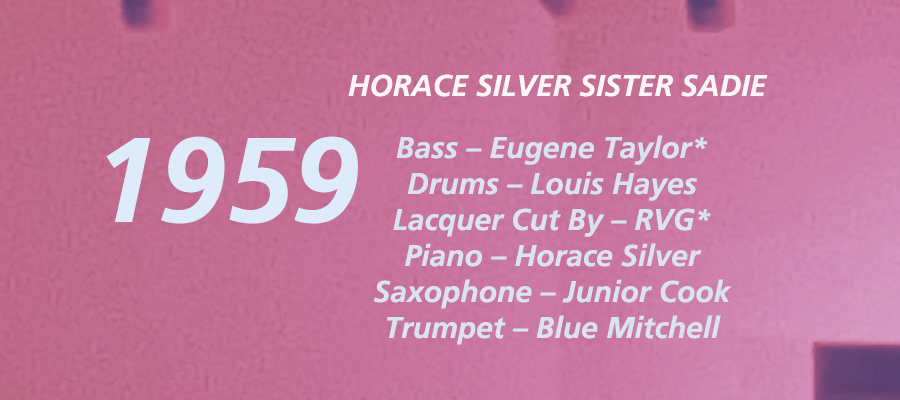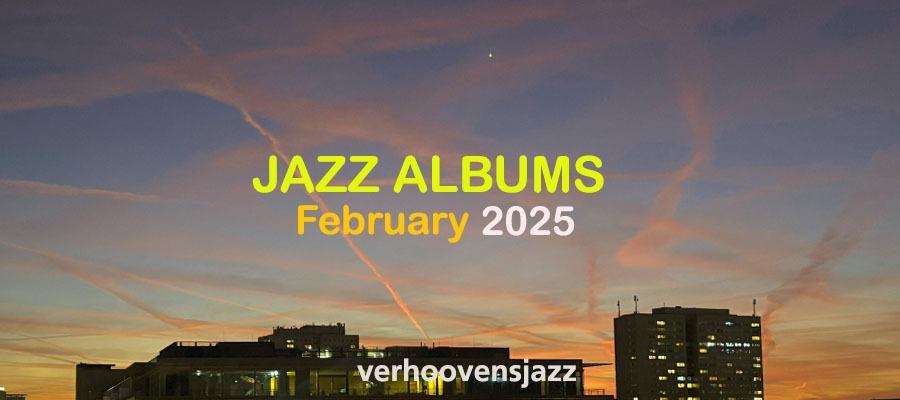
Horace Silver Sister Sadie 1959
Horace Silver Sister Sadie 1959 Wikipedia (english) Horace Silver – written by horace silver
Sister Sadie – auf Jazzstandards.com gibt es für diesen Song nur eine Hörbeispielliste von Horace Silver, Jimmy Smith, Buddy Rich, Woody Herman, Hank Crawford, Michael Urbaniak Quartet, Monty Alexander, The Gil Evans Orchestra und Joe Pass. Die gleichen verdächtigen wie sie auf Wikipedia auftauchen.
Auf Wiki hast du außerdem Andy and the Bey Sisters, Ray Charles, Shirley Scott, James Moody, Rahsaan Roland Kirk, Maceo Parker, Joey DeFrancesco, GRP All-Star Band Dee Dee Bridgewater.
Bei Hans Jürgen Schaal erfahren wir:
Horace Silver gilt als hauptverantwortlich für die Erfindung jenes funkigen, gospeligen, souligen Hardbop, der in den Fünfzigern auch Pulpit Jazz hieß, weil er die Leute an schwarze Gottesdienste erinnerte.
Hans Jürgen Schaal Jazzstandards S. 431
Wir lesen von Silver’s Klavier-Stil, der die „schmutzigen“ (in Anführungsstriche „schmutzigen“) Blues-Akkorde, starke Bassfiguren und seinen perkussiven Anschlag hervorhebt, ein Hinweis auf die schwarzen Wurzeln der Musik – es türmen sich die Ansagen vom sprichwörtlichen Blue-Note-Sound der Fünfziger und dem Prototyp des funky Hard-Bop. Das alles im AABA Schema, möchte man hinzufügen, klar doch, im Up-Tempo.
Ein most popular song, an enduring composition and wideley covered by Woody Herman and many others – heißt es auf anderen Kanälen, die Geschichte, die sich selbst zitiert.
Der 32 Takter beschränke sich auf großintervallige Zwei-Takt-Phrasen, eine übersichtliche Blues-Tonalität und auf (weitgehend) drei Harmonien. Ein kräftiger Erweckungsgesang in einer schwarzen Kirche sei herauszuhören, John Coltrane soll ihn Amen-Nummer genannt haben wegen der zwei Akkorde, die das Klavier zwischen den Themenphrasen intoniert.
AMEN hieß auch die Platte, die der Organist Lou Bennett im Sommer 1960 in Paris aufnahm und die er mit „Sister Sadie“ eröffnete – gefolgt von einer anderen, damals ebenfalls ganz neuen „Amen“-Nummer: Miles Davis „So What.“
Hans Jürgen Schaal Jazzstandards S. 432
Einmal mehr möchte man es mit den Instrumenten aufnehmen und rufen: das Sprechen der Sprache, die Musik den Musikern und Musikerinnen – es wird sonst zum Aufschrei der Metaphern, Bilder und Vergleiche, wenn du versuchst zu übersetzen, was alles möglich ist auf zwölf Tönen, vom Erdigen, Schmutzigen, vom Schwarzen das Weiße abstrahiert. Inklusive der bemühten Witze.
Geschenkt – denn: nach vier oder fünf Beispielen ist Schluss mit drei Akkorden am Anfang – du suchst nach Versionen, die das umkippen und etwas Eigenes draus machen.
horace silver quintet song for my father
señor blues horace silver
Horace Silver Sister Sadie 1959
Ray Charles | Joey DeFrancesco | Rahsaan Roland Kirk
The American Songbook is not The Real Book
Jimmy Smith – Damn 1996 | Sister Sadie
Wikipedia
Buddy Rich – Swingin‘ New Big Band 1966 | Sister Sadie
Wikipedia
Michael Urbaniak Quartet Live in New York Sister Sadie
Wikipedia
Maceo Parker Mo‘ Roots 1991 Sister Sadie
Wikipedia
Andy Bey & the Bey Sisters Andy Bey & the Bey Sisters 1961 Sister Sadie
Wikipedia

Sister Sadie Horace Silver – Great American Songbook

English Version
Sister Sadie – from Jazzstandards.com there is only one audio sample list for this song from Horace Silver, Jimmy Smith, Buddy Rich, Woody Herman, Hank Crawford, Michael Urbaniak Quartet, Monty Alexander, The Gil Evans Orchestra and Joe Pass. The same suspects as appear on Wikipedia.
On Wiki you also have Andy and the Bey Sisters, Ray Charles, Shirley Scott, James Moody, Rahsaan Roland Kirk, Maceo Parker, Joey DeFrancesco, GRP All-Star Band Dee Dee Bridgewater.
Hans Jürgen Schaal tells us:
Horace Silver is considered to be mainly responsible for the invention of that funky, gospel, soulful hardbop that was also called pulpit jazz in the fifties because it reminded people of black church services..
Hans Jürgen Schaal Jazzstandards S. 431
We also read of Silver’s piano style, which emphasises the „dirty“ (in inverted commas „dirty“) blues chords, strong bass figures and his percussive touch, a reference to the music’s black roots – announcements pile up of the proverbial blue note sound of the fifties and the prototype of funky hard bop. All in the AABA scheme, one might add, sure enough, up-tempo.
A most popular song, an enduring composition and widely covered by Woody Herman and many others – says the story quoting itself on other channels.
The 32 bar song confines itself to large interval two bar phrases, a clear blues tonality and to (largely) three harmonies. A powerful revival song in a black church can be heard, John Coltrane is said to have called it Amen number because of the two chords the piano intones between the theme phrases.
AMEN was also the name of the record that organist Lou Bennett recorded in Paris in the summer of 1960, opening with „Sister Sadie“ – followed by another „Amen“ number that was also brand new at the time: Miles Davis‘ „So What.“
Hans Jürgen Schaal Jazzstandards S. 432
Once again you want to take on the instruments and shout: the speech to the language, the music to the musicians – it otherwise becomes a cry of metaphors, images and comparisons when you try to translate what is possible on twelve notes, from the earthy, the dirty, from the black the white abstracted. Including the attempted jokes.
It’s a gift – because after four or five examples, you’re done with three chords at the beginning – you look for versions that overturn that and make something of your own out of it.
Have a look for:
- The Great American Songbook
- Jimmy van Heusen It could happen to you
- Sammy Cahn I Should Care
- Fats Waller Honeysuckle Rose
- Stephen Sondheim Send in the Clowns
- Jerome Kern Long ago and far away
- Gus Arnheim Sweet and Lovely 1931
- Ralph Rainger If I should lose you
- Joseph Kosma Autumn Leaves
- Tunes and Explorations Florian Ross Octet
- Keith Jarrett Standards



















